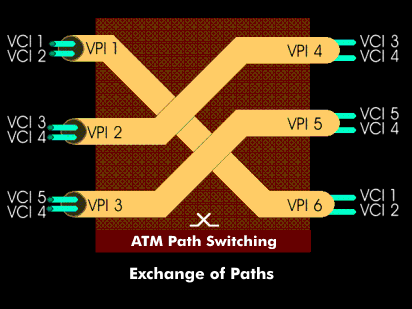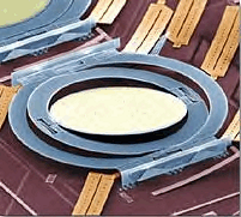cross connect (CC)
The term cross connect is used in ATM technology, in optical networks and in cabling technology.
- A cross connect is a switch that only switches virtual paths. It does not switch individual channels, but entire channel groups to other connection paths. The crossconnects are flexibly controlled and can thus be quickly adapted to new traffic situations. The cross connections are not controlled by means of routing, but by control commands from the operator. Crossconnect is mainly used in SDH networks. In ATM networks, cross connect switches the virtual paths( VP); the virtual channels( VC) located within the paths remain unaffected.
- In contrast to an electronic cross connect, an optical cross connect does not work with labels but with wavelengths (`lambda`). Here, an optical path corresponds to a label switch path( LSP) signaled by Multi-Protocol Label Switching ( MPLS) traffic engineering. An optical cross connect consists of two components: the control component and the forwarding component. The control component finds resources in the optical network, such as free wavelengths, collects topology and state information, handles path selection and link management in the optical network, and provides resilience. The forwarding component is controlled by building switching tables in the cross connect. These include the incoming interface, the incoming wavelength, and the outgoing interface and wavelength.
- In cabling technology, it is a cable splitter used in tertiary cabling to convert high-pair or high-fiber cables to multiple smaller cables. Not to be confused with a cable splitter in local networks.


